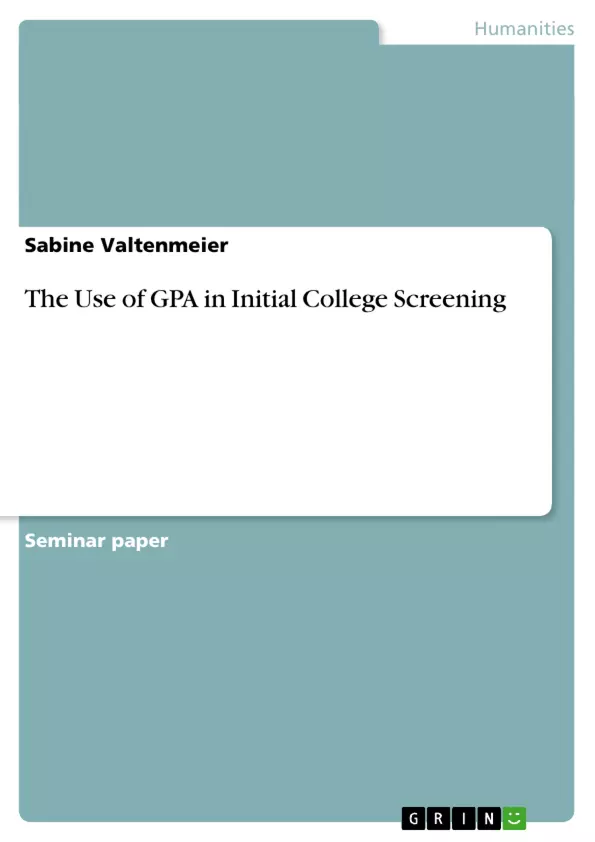This essay examines the use of grade point average (GPA) in initial college screening. Therefore the following questions should be answered: if personnel administrators are recruiting on campus, does GPA play a role in gaining an invitation for a job interview? And, if so, are there any decision rules, i.e., are only students with very high (or very low, etc.) GPAs invited? Besides taking a short look at the different types of GPA the question of which type of GPA is preferred in college recruiting is addressed. A further question deals with the consistency of the use of decision rules, i.e., are decision rules consistent within an organization or within certain job types (for example engineers)? And finally, the influence of the size of the applicant pool regarding the use of GPA as a screening device is examined.
To answer these questions McKinney, Carlson, Mecham, D’Angelo and Connerley examined 1156 jobs offered by different organizations and published their results in the essay “Recruiters’ use of GPA in Initial Screening Decisions: Higher GPAs don’t always make the cut”. This essay was first published in the journal “Personnel Psychology” in 2003, and is the one that is mainly quoted in this term paper. Other essays will also be mentioned in comparing the results of the essays.
Following this overview of the term paper there is a short review of the current state of research. Then the main article including its methods and results is summarized. Finally, there is a discussion dealing with the questions if GPA really is a valid screening device and if there are other devices that are better or equal. Last, there are some suggestions for future research and a take-home message.
Inhaltsverzeichnis (Table of Contents)
- Introduction
- Overview
- State current of research
- Do higher GPAs always make the cut?
- Method
- Results
- Discussion
Zielsetzung und Themenschwerpunkte (Objectives and Key Themes)
This essay examines the role of grade point average (GPA) in the initial screening process for college graduates seeking employment. It aims to determine if GPA is a significant factor in securing a job interview and whether recruiters utilize specific decision rules based on GPA scores. The essay explores different GPA types, the preferred GPA for recruitment, and the consistency of decision rules across organizations and job types. Additionally, it investigates the influence of the applicant pool size on the use of GPA as a screening tool.
- The role of GPA in securing a job interview
- Decision rules and GPA cutoff scores used by recruiters
- Different GPA types and preferred GPA in recruitment
- Consistency of decision rules across organizations and job types
- Influence of the applicant pool size on the use of GPA
Zusammenfassung der Kapitel (Chapter Summaries)
The essay begins by providing an overview of the research on the use of GPA in screening decisions. It highlights previous studies that have demonstrated the correlation between GPA and job performance, while also acknowledging the potential disadvantages of using cutoff scores due to differences in GPA across ethnic groups. The essay then delves into the main study conducted by McKinney et al. (2003), outlining the methods employed and the results obtained. The methods section details the data collection process, the measures used, and the analytical techniques employed. The results section presents the findings on the correlation between GPA and the likelihood of receiving a job interview. The essay concludes with a discussion on the validity of GPA as a screening device, exploring potential alternative screening methods and suggesting areas for future research.
Schlüsselwörter (Keywords)
This essay focuses on the use of GPA in initial college screening decisions, examining its role in securing job interviews and the decision-making process of recruiters. Key concepts include GPA as a screening device, decision rules, GPA cutoff scores, different GPA types, consistency of decision rules, and the influence of the applicant pool size on GPA usage.
- Citation du texte
- Sabine Valtenmeier (Auteur), 2006, The Use of GPA in Initial College Screening, Munich, GRIN Verlag, https://www.grin.com/document/72760



